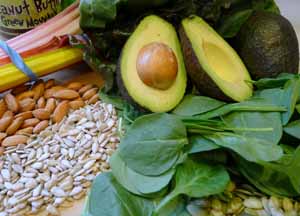
More evidence that low-calorie sweeteners are bad for your health
Studies show that artificial sweeteners can raise the risk of hypertension, metabolic syndrome, type 2 diabetes and heart disease, including stroke.

Natural Health News — Adding to the ongoing discussion about how much vitamin E is enough, a new study has found that high levels of blood fats such as cholesterol and triglycerides can keep this essential micronutrient tied up in the blood stream, and prevent it from reaching the tissues that need it.
The research, published in the American Journal of Clinical Nutrition, also suggested that we are still far from finding a reliable way to assess vitamin E status, noting that measuring only blood levels may offer a distorted picture of whether or not a person has adequate amounts of this vitamin, and that past methods of estimating tissue levels are flawed.
Inadequate vitamin E intake remains a significant societal problem. In the US for example, more than 90% of the people in the United States who don’t take supplements don’t get the recommended amount of vitamin E in their diet.
“This research raises particular concern about people who are obese or have metabolic syndrome,” said Maret Traber, lead author of this study, and a principal investigator in OSU’s Linus Pauling Institute.
Poor absorption in body tissues
“People with elevated lipids in their blood plasma are facing increased inflammation as a result,” Traber said. “Almost every tissue in their body is under oxidative attack, and needs more vitamin E. But the vitamin E needed to protect these tissues is stuck on the freeway, in the circulatory system. It’s going round and round instead of getting to the tissues where it’s needed.”
This research was done with 41 men and women, including both younger and older adults, who obtained vitamin E by eating a breakfast containing 120g of deuterium-labeled collard greens. The radioactive element in the collard greens allowed the nutrient could be tracked as it moved through the body.
Although the scientists did not find a significant difference in absorption based solely on age or gender, there was a marked difference in how long vitamin E stayed in blood based on higher level of lipids in the blood – a more common problem as many people age or gain weight.
The study concluded that only 24% of vitamin E is absorbed into the body, instead of previous estimates of 81%.
“In simple terms, we believe that less than one third the amount of vitamin E is actually making it to the tissues where it’s most needed,” Traber said.
Necessary throughout the body
Vitamin E is especially important in tissues and organs such as artery walls, the brain, liver, eyes and skin, but is essential in just about every tissue in the body. A powerful, fat-soluble antioxidant, it plays important roles in scavenging free radicals and neurologic function. In the diet, it’s most commonly obtained from cooking oils and some vegetables.
Circulating in the blood stream vitamin E is not completely wasted, Traber noted. There, it can help protect LDL and HDL cholesterol from oxidation, which is good. But that doesn’t offset the concern that not enough of this micronutrient may be reaching tissues, she added.
While there have been calls for the 15mg recommended daily amount to be lowered, the scientists say this is not justified given their findings.

Please subscribe me to your newsletter mailing list. I have read the
privacy statement